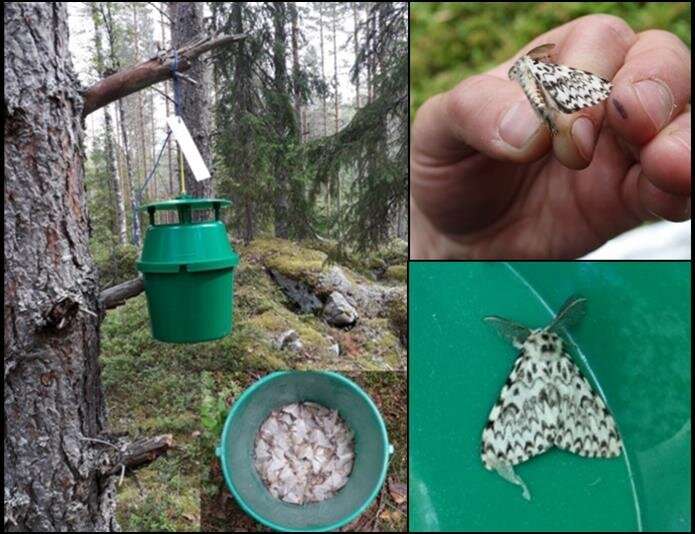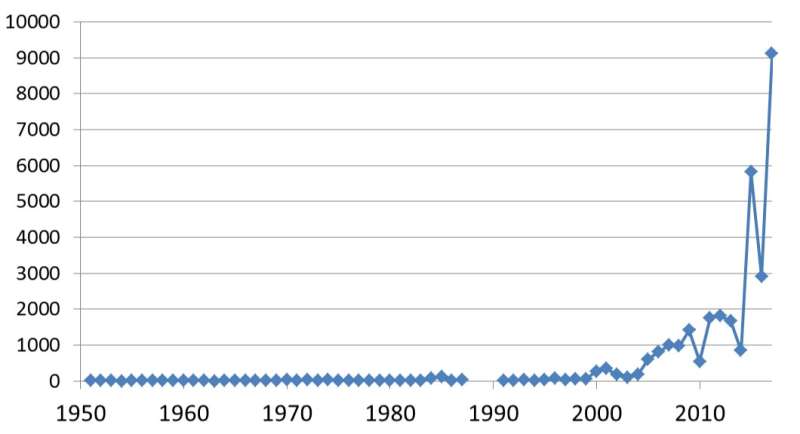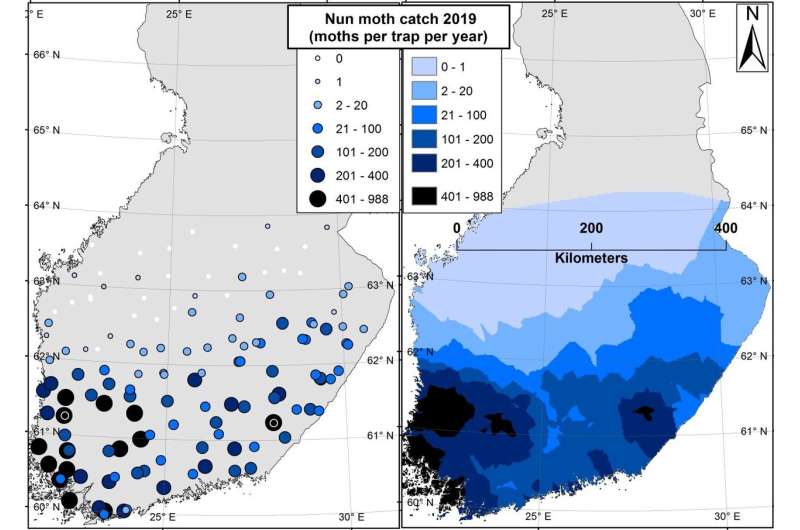Central European pests are migrating northward

The nun moth was only a rare inhabitant in Finland only 20 years ago. As a winner of climate change, its population growth has been rapid—as confirmed by pheromone trappings in summer 2019.
Finland, as cold and isolated as she still is, has seen a rapid increase in the abundance of insects typically associated with Central and Eastern Europe. Of the various examples,the nun moth (Lymantria monacha) is worthy of some special attention.
A sudden increase in abundance
The nun moth is a nocturnal moth, whose larvae can feed on needles of various trees, but they are especially keen on defoliating Scots pine and Norway spruce (Finland's two main tree species). While any healthy forest ecosystem is filled with insects feeding on vegetation, there is something special about the nun moth: it has the ability to form mass outbreaks. I am not talking about minor things here; an outbreak in Poland (1978–1983) caused damage in ca. two million hectares of forests (Bejer 1988). Yet, those events did not really concern Finland: while the first encounters of the nun moth in Finland date back to the 1950s, for the next 50 years, these were just rare individual occurrences. Then something happened and rapid population growth has taken place during the past 20 years (for more information see the open access research article Melin et al. (2020), where more details on the results are outlined). It was only after this rapid population growth that we began to associate the insect with the prefix "pest."

Researchers from Natural Resources Institute Finland (Luke) and University of Eastern Finland (UEF) hatched a plan for mapping the abundance of the species. This was to be done with pheromone traps. The method was piloted in 2018, and in 2019 a network of pheromone traps was set out across Finland, within and beyond the known range of the species. The used traps were funnel traps equipped with a sexual pheromone mimicking that released by females.
Results went beyond the expected
With pheromone trapping the northernmost nun moth individuals so far were found, and more importantly, it was confirmed that the species is present throughout Central and Southern Finland.
At many sites, the abundance indicated the presence of a locally reproducing viable population; one that is happily feeding and breeding (for more information see the open access research article Melin et al. (2020), where more details on the results and the used methodology are outlined). The northernmost catches were made up of only lonely males. These kinds of wind riders are typical for the species: after a successful copulation, male nun moths have a few more weeks to live.

Nun moth is a winner in the climatic change
As the Finnish climate has become warmer (Mikkonen et al. 2015), and the country is vast with coniferous forest, the outlook is positive for the nun moth and its apparent range expansion. As far as current knowledge goes, the species is a winner of the climatic change, especially up in the Nordics. Indeed, the northwards expansion of the nun moth, as well as its adaptation to cooler Finnish climate, was discussed already in Fält-Nardmann (2018).
Now, the researchers minds are set on further studies such as trapping of the larvae, or the linking of nun moth abundance to variables of weather and landscape structure. This future research will give hands-on information about the damage potential of this species—one that a mere 20 years ago was only a rare inhabitant.
More information: Markus Melin et al. From a rare inhabitant into a potential pest – status of the nun moth in Finland based on pheromone trapping, Silva Fennica (2020).
Provided by Natural Resources Institute Finland



















